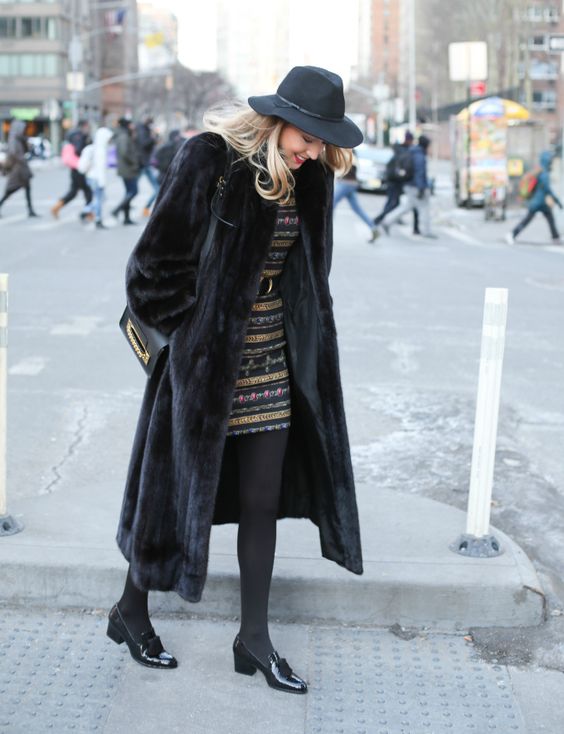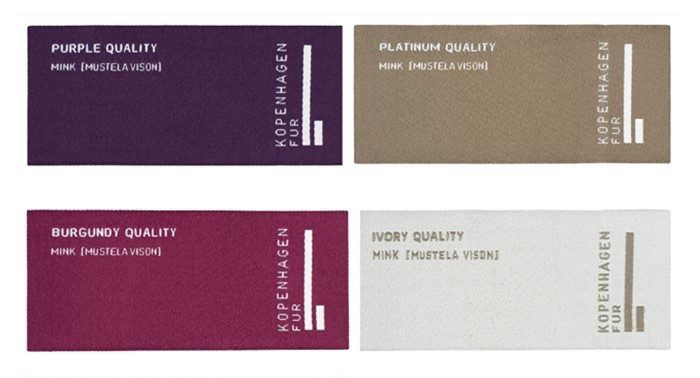Back in 2017, we published a popular blog post with the title ” 5 Things To Know Before You Buy A Real Fur Coat ”. Following your feedback, we decided to write a brand new guide for Mink coats!
When a woman purchases her first fur coat, it’s almost always mink. Mink is officially the highest-selling fur worldwide, due to its lightweight, decadently soft texture, unique sheen, and incredibly long life!
So, here is a quick guide to help you choose your mink coat wisely.
- Quality of the Pelt.
There are several mink pelt qualities and the better the nature of a mink pelt, the higher the price. So, for a high-quality mink coat, you will have to pay more. The best quality pelts are sold in certified fur auctions. NAFA in Canada, the SAGA in Finland, and the KOPENHAGEN FUR in Europe. You can check the quality of a mink pelt from the touch and look of it. Higher quality pelts are softer, have shorter hair, are more lightweight, and shinier and their color is more vivid.
- Check inside the lining.
The best way to determine the quality of a fur coat and whether it is real or faux. Examine underneath the lining, checking the back of the fur itself. Sometimes there will be an opening in the lining at the end of the coat. Other coats have a zipper on the lining so you can see easily inside. Find a place in the lining where you can either see inside or at least feel the underside of the fur. It’s a fairly simple matter to open up a seam in the lining just an inch or so to feel the back of the fur. Genuine animal pelts will resemble smooth suede leather and are often sewn together in strips, sections, or pieces like a patchwork quilt.
- Male or Female Mink.
One common concern of mink consumers is whether to buy a garment made of male or female pelts. In general, female pelts are smaller and lighter than male pelts. The primary objective should be to acquire the finest quality mink in a professionally fitted garment. Both male and female mink that have been bought at a certified fur auction are recognized for their outstanding quality and beauty. The answer to this dilemma is that each garment, whether made from male or female mink, has to be judged individually based on its own quality.
- Search for labels.
The most common labels you can find in a mink coat are from the country of manufacture, the brand of the coat, and the original label of the pelts. As we mentioned, the best quality pelts are sold in the certified fur auctions, the NAFA in Canada, the SAGA in Finland, and the KOPENHAGEN FUR in Europe. When you see one of these labels on your coat, then you know that it has been made with the best quality raw material.
These reputable fur auctions gather pelts from certified farms and sell them directly to the furriers. In every auction, there are several lots for the same fur type and color, because some farms produce better quality pelts than others. Every auction has its own system of labeling and uses several labels to identify every quality. For example, in mink pelts, Kopenhagen offers 4 qualities of pelts. The finest of the finest is the Purple Quality. The second, best is the Platinum Quality. The third is the Burgundy Quality and the Fourth quality is Ivory. Check the photo below.
- Smell.
You don’t want to get your new coat home only to find that it reeks of mothballs or mold. Give the coat a sniff, and try to have a friend smell it as well so you can have someone else’s opinion to consider. If there is a discreet smell, you can get rid of it by sealing the coat in a container with activated charcoal or kitty litter, both of which absorb bad odors.
Nowadays, during the cleaning process of the mink pelts, a small dose of perfume is added. Most of the new mink coats in the stores have this strong, beautiful smell. After a few days of using your brand new mink coat, the perfume will weaken and eventually disappear.
- Condition.
Check the condition of the pelt under the fur. Over time, the pelt can start to break down or the seams can pull apart. Especially if the coat is unsold for many years or it is vintage. This damage can result in holes in the coat. Before you buy a vintage piece, make sure that the pelt is still in good condition.


